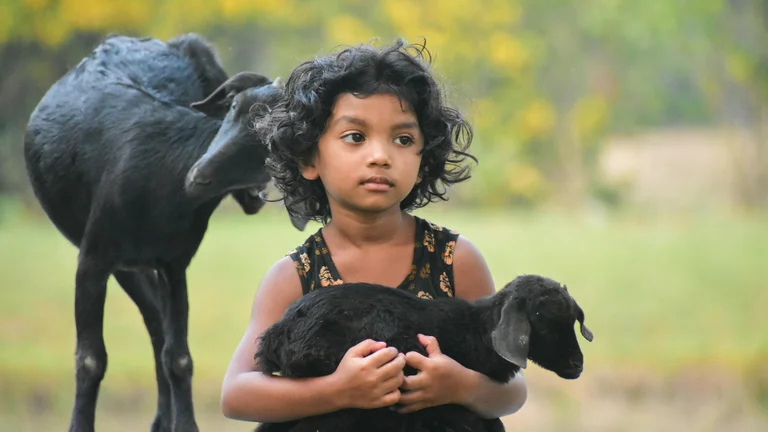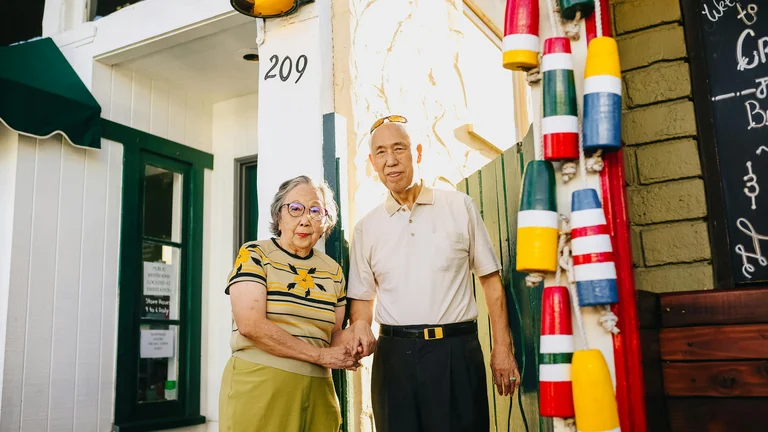Exploring the Unique Humorous Appeal of Sibling Dynamics in K-Dramas

Sibling relationships stand out as some of the most enduring yet complicated human bonds depicted in K-dramas, providing not only emotional depth but also exceptional comedic value. South Korean dramas often leverage sibling dynamics to weave humor into intense or dramatic storylines, creating levity that balances the series’ tone. The comedy emerging from these sibling interactions is frequently grounded in their distinct personalities, contrasting attitudes, and cultural traditions surrounding family roles, especially within the Korean context where respect, hierarchy, and familial duty are emphasized.
Understanding the funniest sibling dynamics requires first acknowledging the cultural framework that influences these portrayals. Korean family structures traditionally exhibit clear elder-younger sibling roles, with the eldest expected to be authoritative and responsible, while younger siblings might oscillate between defiance and admiration. K-dramas exaggerate or cleverly subvert these traits to produce comedic moments. For example, humor often arises from the eldest sibling’s exaggerated sense of duty clashing with the mischievous or carefree nature of younger siblings, setting up situations ripe for misunderstandings, pranks, or sarcastic banter.
Moreover, K-dramas emphasize the importance of family unity despite conflicts, so sibling quarrels, though frequent and sometimes intense, rarely lead to permanent rifts. This central value allows sibling roles to oscillate between antagonists and allies in rapid succession, creating humorous tension and resolution that keeps viewers engaged. The clever scripting, punctuated with physical comedy, sharp retorts, and situational irony, underpins the enduring popularity of sibling interactions as a source of laughter.
This section introduces the cultural significance and narrative potential that sibling characters hold in the K-drama industry, establishing why their funny dynamics are both relatable and entertaining globally. We will now explore specific tropes and examples that illuminate the diverse comedic sibling relationships audiences cherish.
Common Comedic Tropes in Sibling Interactions Across K-Dramas
Analyzing K-dramas uncovers several recurring comedic tropes associated with siblings, each invoking laughter through exaggerated but familiar behaviors or circumstances. These tropes often play off traditional family expectations, creating humor rooted in cultural recognition yet accessible universally. Identifying these tropes helps understand why sibling scenes stand out both narratively and comedically.
One predominant trope is the "competitive older sibling," who constantly attempts to outshine their younger brother or sister, whether academically, socially, or romantically. This competition is portrayed in absurd ways—such as extreme jealousy over mundane achievements or ridiculous sabotage attempts—that highlight human insecurities exaggerated for humor. The older sibling’s inflated self-importance regularly backfires, resulting in slapstick failures or self-inflicted embarrassment.
Conversely, the "rebellious younger sibling" trope features a younger brother or sister deliberately defying norms to carve their own identity. Their witty retorts, idle mischief, or refusal to conform create comedic tension when confronted by the traditionalist older sibling and other family members. This dynamic encapsulates the generational and personal conflicts common in families but presented with a lighthearted touch through the younger sibling’s antics.
Another well-executed trope is the "annoying but lovable middle child," who uses sarcasm or a dry wit to navigate feeling overlooked in a family with multiple siblings. Their humor often stems from self-deprecation or pointed observations about their siblings’ foibles, offering comedic reflection on sibling hierarchies and attention dynamics.
The "unexpectedly wise sibling" trope surprises audiences when a seemingly irresponsible or quirky sibling suddenly delivers insightful advice or calm reasoning during crises, often catching other characters off guard. This turn adds layers besides humor, blending warmth with comedic timing. It challenges stereotypes and adds complexity to sibling portrayals.
Table 1: Common Sibling Comedy Tropes in K-Dramas
| Trope | Description | Typical Humor Style | Example K-Drama |
|---|---|---|---|
| Competitive Older Sibling | Senior sibling trying excessively to outdo younger ones | Exaggerated rivalry, slapstick failures | Fight for My Way |
| Rebellious Younger Sibling | Younger sibling defying traditions and expectations | Witty comebacks, mischief | Reply 1988 |
| Annoying but Lovable Middle Child | Middle sibling's sarcastic or self-deprecating humor | Dry wit, observational jokes | My Love from the Star |
| Unexpectedly Wise Sibling | Quirky member providing wisdom unexpectedly | Surprising insights, deadpan humor | Weightlifting Fairy Kim Bok-joo |
The recurrence of these tropes underlines their effectiveness in generating laughter while enhancing character depth. K-drama writers consciously refine these archetypes to push boundaries—sometimes blending multiple tropes or adding unique quirks to freshen the comedic appeal. These approaches maintain audience interest through unpredictability despite thematic familiarity.
Iconic Examples of Hilarious Sibling Pairs and Their Dynamics
Beyond tropes, distinct sibling pairs in K-dramas have gained iconic status for their unforgettable comedic chemistry. The humor emerges from their unique backstories, dialogue delivery, and interactions that resonate strongly with viewers. We explore several such exemplars, illustrating the range and intensity of sibling humor realized on screen.
"Fight for My Way" showcases siblings Ko Dong-man and Ko Dong-hee. Their competitive, sarcastic exchanges and exaggerated clashes over anything from career choices to dating create a continuously amusing dynamic. The older brother’s gruff yet caring persona contrasted with the younger sister’s sharp tongue leads to scenes packed with comedic tension and heartwarming moments. Their sibling rivalry reflects real-life frustrations but is heightened by over-the-top reactions capturing a universally recognizable sibling bond.
In "Reply 1988," the Song siblings’ interactions are quiet treasures of humor based on subtle teasing, sibling loyalty, and generational clashes. The series captures forgotten details of 1980s Korean family life, making the humor both nostalgic and fresh. Their fraternal pranks or sarcastic arguments reveal underlying affection, demonstrating how humor is effectively used to portray emotional truth. The quiet wit shared between Song Deok-sun and her brothers enriches the story’s multi-layered appeal.
"Weightlifting Fairy Kim Bok-joo" introduces the amusing relationship between Bok-joo and her brother Kim Ki-woong. His playful antagonism and her reacting with equal parts exasperation and love strike a chord with audiences familiar with typical sibling interactions. Their banter uses timing and physical comedy effectively, mixing lighthearted disputes with meaningful support, adding charm to this sports-themed drama.
Lastly, "My Love from the Star" features Cheon Song-yi and her brother Cheon Chi-soo in a dynamic filled with sarcastic teasing and protective rivalry. The humor born out of their conversations often involves mockery mixed with disguised fondness, highlighting how sibling relationships navigate both conflict and care. Their exchanges, marked by quick wit and humorous exaggerations of sibling duties, engage viewers while deepening character personalities.
Psychological Underpinnings Influencing Sibling Humor in Korean Culture
Understanding why sibling humor resonates in K-dramas benefits from exploring psychological and cultural dimensions specific to Korea. The collectivist nature of Korean society values familial interdependence, respect for elders, and social harmony. These values impact how sibling roles are enacted and how humor is deployed within those roles.
The psychological concept of sibling rivalry illustrates an innate competition for parental attention and familial resources, which K-dramas amplify for comedic effect. In Korean contexts, where hierarchy is highly significant, this rivalry merges with expectations of deference and responsibility, producing humorous contradictions. For instance, an elder sibling demanding respect might simultaneously behave immaturely, undermining their authority and provoking laughter.
Additionally, humor helps mediate conflicts and maintain emotional bonds within families. In K-dramas, characters use sarcasm, teasing, and irony as tools to express affection indirectly, complying with cultural tendencies to avoid open displays of emotion. These comedic strategies resonate with viewers familiar with similar family interactions, creating empathy and humor simultaneously.
Social psychology also points to humor as a coping mechanism that mitigates stress inherent in family pressures. Given the intense demands often depicted in Korean families, siblings use humor to relieve tension and assert individual identities. The dramatization of these moments in K-dramas heightens relatability, allowing viewers to laugh at the familiar stresses of siblinghood.
How Writing and Directing Enhance Humor in Sibling Scenes
The successful portrayal of sibling humor in K-dramas involves deliberate decisions in writing, directing, and acting. Writers meticulously craft sibling dialogue that strikes a balance between wit, sarcasm, and emotional sincerity. Precise comedic timing is critical; pauses, interruptions, and overlapping speech patterns often simulate real sibling conversations, adding authenticity and humor.
Directors contribute through visual cues such as facial expressions, body language, and physical comedy. Subtle gestures—eye rolls, exaggerated sighs, or playful shoves—heighten comedic effect without needing excessive dialogue. The use of situational irony, placing siblings in awkward or unexpected contexts, furthers laughter by contrasting their reactions against typical expectations.
Moreover, the actors’ chemistry profoundly influences the humor’s quality. Sibling actors who can match each other's pace and tone imbue scenes with naturalistic flow, avoiding forced humor. Skilled improvisation in unscripted moments often leads to genuine laughter captured on film, which enhances viewer engagement.
Analyzing Impact Through Viewer Reception and Cultural Phenomena
Sibling dynamics in K-dramas are not merely narrative devices but culturally impactful phenomena influencing audience perceptions and discussions. Feedback from viewership indicates that sibling humor ranks among the most relatable and cherished aspects of series, fostering fan communities and social media engagement.
Studies analyzing viewer comments reveal that audiences appreciate sibling humor for its balance of laughter and emotional grounding. Fans often draw parallels between their own family experiences and on-screen depictions, sharing anecdotes inspired by K-drama sibling antics. This real-world impact expands the dramas’ reach beyond entertainment, contributing to cultural exchange and understanding.
In particular, international viewers unfamiliar with Korean family norms find humor an accessible entry point into the culture portrayed. The universality of sibling relationships, combined with the specificity of Korean family expectations, creates a compelling blend of novelty and familiarity, encouraging sustained interest in K-drama content.
This popularity has motivated more K-drama productions to emphasize sibling storylines, recognizing their appeal across demographics. Consequently, siblings often feature as central figures rather than side characters, leveraging comedic potential to elevate narrative complexity and audience engagement.
Step-by-Step Guide to Crafting Engaging Sibling Comedy in K-Drama Writing
For aspiring writers and enthusiasts wishing to understand how successful sibling humor is constructed in K-dramas, the following guide outlines crucial steps and key considerations:
- Define sibling roles and traits clearly: Establish each sibling’s personality, age hierarchy, and motivations to create distinct characters whose interactions spark natural conflict or camaraderie.
- Set cultural or familial context: Incorporate societal expectations and family traditions to ground humor in a believable environment that adds layers to jokes and situational irony.
- Develop contrasting personalities: Pair opposites (e.g., serious elder sibling vs. playful younger one) for enriched comedic tension and diverse interaction patterns.
- Write dialogue with natural rhythm: Use interrupted sentences, overlapping speech, and casual banter to mimic real-life sibling conversations, enhancing authenticity.
- Introduce recurring comedic motifs: Utilize repeated jokes, catchphrases, or signature reactions that build familiarity and anticipation throughout the narrative.
- Employ physical comedy and visual gags: Plan scenes involving slapstick moments, exaggerated gestures, or prank battles to complement verbal humor.
- Balance humor with emotional depth: Ensure that comedic moments do not undermine genuine affection or character development, preserving audience investment.
- Test comedic timing during rehearsals: Work with actors to refine pauses, emphasis, and reactions for maximum comedic impact and flow.
- Incorporate cultural references subtly: Embed cultural nuances without alienating broader audiences, so humor remains accessible yet insightful.
- Iterate and adapt based on feedback: Use viewer reactions and sensitivity reviews to enhance or adjust humor, ensuring it resonates appropriately.
This structured approach has allowed many successful K-dramas to deliver sibling humor that remains fresh, entertaining, and emotionally resonant. Writers also benefit from studying existing beloved sibling relationships to identify what works creatively.
List: Key Elements That Make Sibling Comedy Work in K-Dramas
- Sharp, witty dialogue that reflects sibling intimacy
- Recognizable family roles influenced by Korean culture
- Physical humor and expressive performances
- Perfect timing and delivery of punchlines
- Balancing humor with warmth and affection
- Incorporation of traditional and modern familial conflicts
- Use of recurring jokes to build comedic rhythm
- Characters’ vulnerabilities revealed through humor
Role of Gender and Birth Order in Sibling Humor
Gender and birth order significantly shape sibling humor in K-dramas due to culturally prescribed roles and expectations. Elder brothers often embody protector roles but are also portrayed as capable of petty jealousy or childish competitiveness. Elder sisters might balance nurturing duties with bossy tendencies, inviting comedic backlash from younger siblings.
Male younger siblings sometimes adopt playful rebellion or impish behavior to challenge elder siblings, whereas female younger siblings’ humor might stem from clever manipulation or emotional expressiveness juxtaposed with an elder sibling’s sternness. These gendered nuances add complexity to humor, reflecting social realities while offering comic relief.
Analyzing multiple K-dramas reveals patterns where birth order humor often targets elder siblings’ sense of responsibility clashing humorously with personal flaws, while younger siblings exploit or expose these flaws to comedic effect. This interplay enriches narrative depth and broadens humor spectra.
Comparative Table: Influence of Gender and Birth Order on Sibling Humor
| Birth Order | Typical Gender Role in Humor | Common Comedic Behavior | Example |
|---|---|---|---|
| Eldest Brother | Authoritative yet insecure male | Overprotectiveness, exaggerated pride, sibling teasing | Fight for My Way (Ko Dong-man) |
| Eldest Sister | Bossy but caring female | Directives, nagging, playful scolding | Descendants of the Sun (Mo Yeon) |
| Youngest Brother | Rebellious or playful male | Mischief, sarcasm, testing limits | Reply 1988 (Jung-hwan) |
| Youngest Sister | Clever, emotionally aware female | Manipulative humor, witty comebacks | Weightlifting Fairy Kim Bok-joo |
Understanding these gendered and ordinal nuances helps viewers appreciate the depth behind seemingly lighthearted sibling humor and allows creators to craft authentic, diverse comic performances.
Impact of Sibling Humor on Character Development and Story Progression
Sibling humor in K-dramas functions beyond comedic interludes; it is often pivotal in revealing characters’ inner struggles, motivations, and growth. By juxtaposing humorous sibling exchanges with serious plotlines, writers reveal layers of vulnerability and resilience, which humanize characters.
For example, through playful arguments, siblings disclose hidden fears and desires, cleverly disguised by humor. The ability to joke with each other despite conflicts demonstrates enduring trust and bonds, which are revisited during critical narrative turning points. This duality of humor and emotional intimacy adds narrative richness.
Furthermore, sibling scenes serve as neutral grounds where tensions from external conflicts dissipate, enabling reconciliation or new understandings. The comedic relief also sustains pacing, preventing thematic heaviness from disengaging audiences. Thus, sibling humor is an indispensable storytelling tool in K-dramas, enhancing character arcs and narrative coherence.
Frequently Overlooked Elements That Amplify Sibling Humor
The subtleties often missed by casual viewers but vital for comedic impact include timing of silence, background sounds, and even musical cues. For instance, a perfectly timed pause after a biting comment can ignite laughter more effectively than rapid-fire jokes. Directors employ silence or reaction shots to let audience comprehension settle, creating anticipation or surprise.
Moreover, culturally specific mannerisms, such as the usage of particular honorifics or diminutives in sibling conversations, add layers of comedy that resonate deeply with Korean audiences. Viewers internationally appreciate the tone and delivery, even if exact words are unfamiliar, thanks to expressive acting and contextual cues.
Sound effects, like exaggerated footsteps or comic instrumentals, accentuate pranks or failures within sibling scenes. These production choices demonstrate the holistic approach in crafting sibling humor beyond the script. Recognizing these elements enhances appreciation of the skill and cooperation involved among writers, directors, and actors.
FAQ - Funniest Sibling Dynamics in K-Dramas
What makes sibling dynamics in K-dramas particularly funny?
Sibling dynamics in K-dramas are funny due to the combination of cultural family roles, realistic yet exaggerated interactions, witty dialogue, and physical humor. These elements highlight rivalry, teasing, and affection uniquely within the Korean social context, making the humor relatable and engaging.
Are there common traits shared by funny sibling characters in K-dramas?
Yes, funny sibling characters often embody archetypes such as the competitive elder sibling, rebellious younger sibling, or sarcastic middle child. Their opposing personalities and behaviors create natural comedic tension that writers use for humor.
How does Korean culture influence sibling humor in K-dramas?
Korean culture, emphasizing hierarchy, respect, and family harmony, shapes sibling humor by injecting tension between traditional roles and individual personalities. Comedy often arises when characters violate or exaggerate these roles, producing humorous contrasts.
Can the humor in sibling scenes be appreciated by international audiences?
Absolutely. While rooted in Korean culture, the universal nature of sibling relationships—rivalry, love, teasing—makes the humor accessible worldwide. Authentic acting and timing help convey jokes beyond language or cultural barriers.
Does sibling humor contribute to story development in K-dramas?
Yes, sibling humor often reveals character depth, eases narrative tension, and highlights emotional bonds. It balances dramatic moments and enriches characters through playful yet meaningful interactions.
What are some iconic K-dramas known for humorous sibling dynamics?
Popular examples include 'Fight for My Way,' 'Reply 1988,' 'Weightlifting Fairy Kim Bok-joo,' and 'My Love from the Star,' each demonstrating different styles of sibling comedy and relatable family moments.
Sibling humor in K-dramas captivates audiences by combining culturally influenced family roles with witty dialogue and authentic interactions. These comedic portrayals reveal complex relationships through rivalry, teasing, and support, making sibling dynamics a distinct and beloved source of laughter and emotional depth in Korean dramas.
In K-dramas, the funniest sibling dynamics blend cultural authenticity, sharply defined character archetypes, and expertly executed comedic timing to create scenes that are both hilarious and emotionally resonant. These relationships not only entertain but also deepen narrative complexity, showcasing the multifaceted nature of family bonds. The laughter stemming from sibling rivalry, teasing, and unexpected wisdom offers viewers a nuanced portrayal of human connections shaped by tradition and individual quirks alike.






